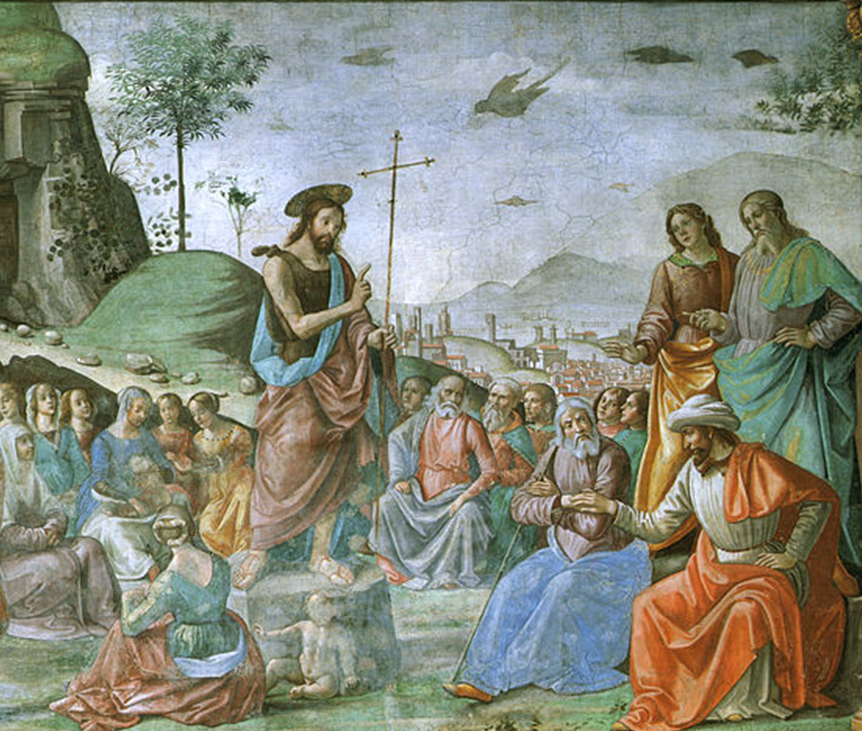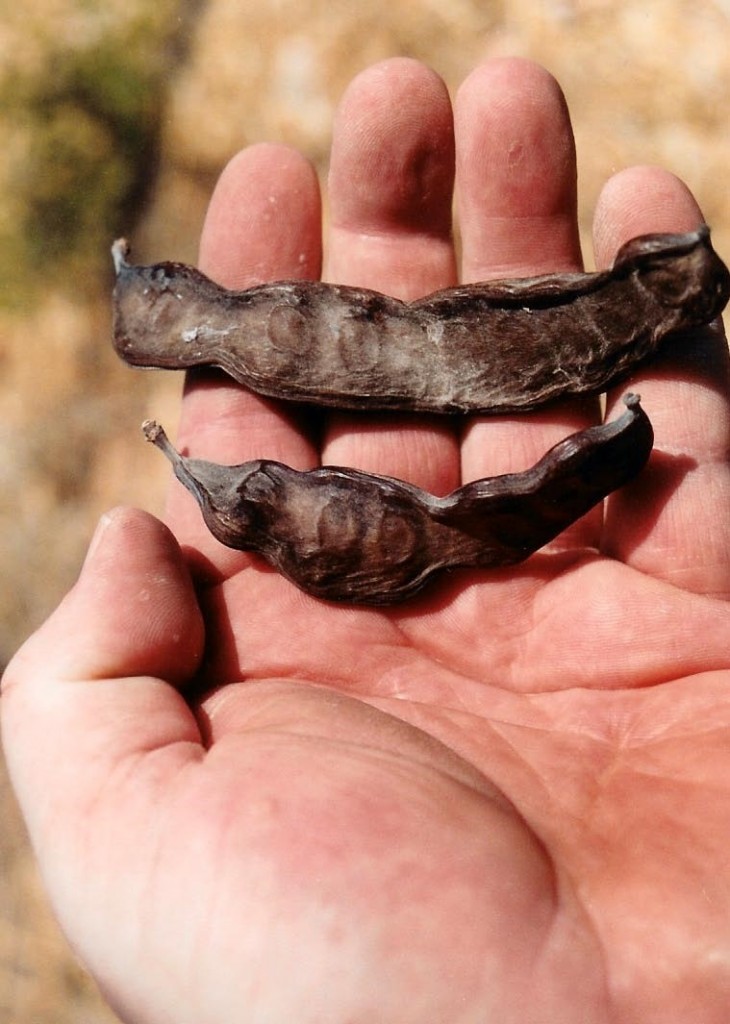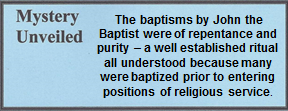05.01.02 Lk. 3:1-6 (See also Mt. 3:1-3; Mk. 1:2-4) The Wilderness Near Jordan, A.D. 26
JOHN DECLARES HIS MINISTRY
1 In the fifteenth year of the reign of Tiberius Caesar, while Pontius Pilate was governor of Judea, Herod was tetrarch of Galilee, his brother Philip tetrarch of the region of Iturea and Trachonitis, and Lysanias tetrarch of Abilene, 2 during the high priesthood of Annas and Caiaphas, God’s word came to John the son of Zechariah in the wilderness. 3 He went into all the vicinity of the Jordan, preaching a baptism of repentance for the forgiveness of sins, 4 as it is written in the book of the words of the prophet Isaiah:[1]
Prepare the way for the Lord;
A voice of one crying out in the wilderness:
make His paths straight!
5 Every valley will be filled,
and every mountain and hill will be made low;
the crooked will become straight,
the rough ways smooth,
6 and everyone will see the salvation of God. (Isa. 40:3-5)
The divine calling of John the Baptist fulfilled the promise given by the prophet Malachi, who said, “See, I will send you the prophet Elijah before the great and dreadful day of the Lord comes” (Mal. 4:5). John called the Jewish people to repentance, a concept that was somewhat new to them. The common belief was that since they were God’s Chosen People they were already saved, and there was no need for repentance. They were familiar with repentance from the standpoint that sins had to be forgiven, but would not keep them from the future messianic banquet. Only absolutely “pure” Israelites were assured of the messianic salvation – no “impure” blood from heathen nations would be accepted – or so they thought.[2] Obviously this was not the opinion of John the Baptist or Jesus.
Jews immersed themselves in a mikvah that was filled with water before entering the temple or synagogue, although that was not for the repentance of sin but for the removal of defilement.[3] John proclaimed the old practice of immersion in a new context, that is, the cleansing from a sinful lifestyle. Most scholars believe that John’s baptism was symbolic of true repentance whereas the baptism most commonly thought of by the Pharisees was the conversion of a Gentile to Judaism.[4]
The religious establishment was not too pleased with John – he was preaching and baptizing even though he did not even graduate from one of their prestigious schools. Furthermore, he did not acknowledge their cherished high social positions, rather, he used powerful and stinging words against them. He called them a “brood of vipers” (Mt. 3:7) and proclaimed destruction and judgment as symbolized with the phrase, the “axe is ready” (Mt. 3:10).[5] He declared that everyone who did not produce good fruit in this life would be cut down and thrown into the fire (Mt. 3:10).[6] He promised profound judgments to come, yet his threatening prophecies were not fulfilled during the lifetime of Jesus.
John’s message of repentance and holy living had a similar ring to the teachings of the Essenes. They had separated themselves from established Judaism due to the corruption in the temple. Some scholars believe John may have been raised by or lived in the Essene community as a youth. Since Scripture indicates that his parents were old, they, no doubt, passed on while he was still young and the Essenes were known to take in orphaned children, especially those of priestly families.[7]
The baptizer came at a time (mid to late 20s, A.D.) when the social-political tension was near the breaking point; every few years there was a revolt in which hundreds, sometimes thousands, were crucified. Caesar Tiberius expounded Hellenistic thought and lifestyle throughout the empire; Pilate angered his subjects with his cruelties, extortions, indolence, and murders. Herod Antipas was almost as wicked as his father Herod the Great and lived the pagan life of a Jewish apostate with reckless lust. Caiaphas and Annas, the temple priests who received their secure positions from Pilate, used the temple to enhance their own wealth at the expense of the common Jews who came to worship.
The Sadducees and leading Pharisees worked in harmony with powerhouse family – Caiaphas and Annas. The common people had become economic slaves in their Promised Land, a land full of pagan idolatry. Two Hellenistic philosophies,[8] Epicureanism and Stoicism,[9] contended for popular supremacy.[10] The former concentrated on sensuality and the latter on intellectualism and pride. Both were influencing Jewish thought and culture. To counteract this pagan invasion, the scribes and Pharisees emphasized traditionalism, multiplied the regulations of daily life, and elevated their Oral Law over the Written Law, while at the same time elevating themselves in the eyes of the people.
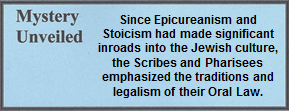
The Jewish peasants had nowhere to turn, no one to help them. Into this caldron of hostilities, bitterness, anger, revolts and rumors of revolts, John preached a message from Isaiah, “Prepare the way for the Lord.” Finally, the four-century silence of God was broken; four centuries with not a single voice from a prophet. People flocked to hear John, hoping that in some way he would deliver them from their heartache, tears, and Roman overlords. The entire life of John was a sermon. His simple message was an earth shaking: “Get ready for the coming of the Lord.”
“In the fifteenth year of the reign of Tiberius Caesar, while Pontius Pilate was governor of Judea” Since there was no universal calendar, it was customary for ancient writers to connect the occurrence of a major event to a year of the king’s reign. Each kingdom had its own calendar and followed a formula similar to the following:[11]
In the “X” year of King “Y,” these events occurred….
Two other biblical examples are,
In the eighteenth year of Israel’s King Jeroboam son of Nebat, Abijam became king over Judah…
1 Kings 15:1
In the twenty-third year of Judah’s King Joash son of Ahaziah, Jehoahaz son of Jehu became king over Israel in Samaria and reigned 17 years.
2 Kings 13:1
Luke used the time formula to emphasize the importance of the ministry of John the Baptist. But reconciling the “fifteenth year of the reign of Tiberius Caesar” to today’s calendar has been a subject of debate. Four considerations are presented.
- Since Tiberius reigned with Augustus for a brief time, the question is whether his reign included the time of co-regency. It was not uncommon for kings and emperors to co-reign – meaning that there were two monarchs in power at the same time. Augustus made Tiberius his colleague in the years A.D. 11 or 12. When Augustus Caesar died in August A.D. 14 and Tiberius Caesar took full control on September 17, A.D. 14.[12] The question is whether Luke intended to include the time of co-regency and which calendar he was using. There were a number of calendars at the time: Jewish, Syrian-Macedonian, and Egyptian calendars, but the calendar of choice was probably the Julian calendar. Luke, no doubt, thought he was recording a precise date, but could not foresee the challenges that would follow centuries later.[13]
- The first year of a king’s reign was often known as the “Ascension year,” and the following year was considered the first year, even though in modern thinking, this would have been the second year of rulership.
- The Jewish provinces were under the control of the Roman provincial capital in Damascus, Syria, where the calendar year began on September 1. If Luke intended to include the time of co-regency then the fifteenth year would have been from October 1, A.D. 27 to September 30, A.D. 28.[14] If the Roman calendar is used, then the fifteenth year began August 19, A.D. 28 and ended on the following August 18, A.D. 29, which would make the date of crucifixion to be in A.D. 30, if Jesus ministered for three and a half years (which in all probability was a year longer).[15] If, however, Luke counted the co-regency of the Caesars, then the fifteenth year of Tiberius Caesar would have been in A.D. 26, which works very well with biblical chronology.
- Finally, another clue is the temple remodeling program, which was in its forty-sixth year (Jn. 2:20). John’s use of the verb (was) implies that the construction was still in process. The beginning of this massive project can be reckoned to 20-19 B.C., in accord with the writings of Josephus, who stated this work began in the 18th year of Herod’s reign.[16] However, he also indicated that construction began three years earlier. Some scholars believe the earlier date may have been the preliminary design work.[17] If the most likely beginning date of the temple reconstruction was the 18th year of Herod’s reign, then the forty-sixth year would be late in the year A.D. 28, the year of the beginning of the ministry of Jesus.[18]
Of these possibilities, traditional scholarship has concluded that Tiberius started his reign when he became co-regent in A.D. 11. This would place the start of John’s ministry in the year 26 A.D.
“Tiberius Caesar … Pontius Pilate … Herod … Philip … and Lysanias … Annas and Caiaphas.” These men were not mythical characters but real persons, who, by their position against Jesus, contributed to the spreading of Christianity. One of the outstanding features of Scripture that is profoundly different from other religions is the fact that nearly all personalities and places have been verified from extra-biblical historical sources. Note the years of reign of the following: Tiberius Caesar (A.D. 14-37). Pontius Pilate (A.D. 26-36), Herod [Antipas] (4 B.C. – A.D. 39), Philip (4 B.C. – A.D. 34), Lysanias (unknown), Annas (A.D. 6-15) and Caiaphas (A.D. 18-36).[19] Luke, more than any other New Testament writer, was careful to anchor events of Jesus to prominent kings and places. Later, using legal terminology,[20] Peter would write,
For we did not follow cleverly contrived myths when we made known to you the power and coming of our Lord Jesus Christ; instead, we were eyewitnesses of His majesty.
2 Peter 1:16
“God’s word came to John.” This is a literary formula, indicating that the prophetic message is from God. The word “word” in Greek is rhema, meaning spoken word, as opposed to logos meaning written word. Rhema is similar to the introductions of earlier prophets: Haggai (1:1), Zechariah (1:1), and Malachi (1:1) which made the connection of these prophets to John. In essence, everyone understood that he was in the same office as the post-exilic prophets, a position underscored by his miraculous birth to elderly priestly parents. When the word of God came to John, he preached repentance and baptism for the forgiveness of sins throughout the remote areas of the Judean Desert.[22] Thus, he was the fulfillment of Isaiah 40:3 and Malachi 3:1.
“Repentance.” (Gk. metanoias). This word has dual meanings: a deep mournful sorrow and a complete change of life; a turn-around to seek a moral change.[23] Essentially, however, this compound word connects time and change, so that the final meaning is to think differently after.[24] The definition includes a sense of reconciliation and, furthermore, while there is a sense of turning “from” sin there is also a deeper and more profound sense of turning “to” God.[25] John’s message emphasizes that failure to repent would bring divine wrath and punishment, while obedience would result in entering the Kingdom of God.
A Lesson in First Century Hermeneutics:
05.01.02.X The Major Prophet Speaks.
It was a common interpretation that when a speaker quoted or paraphrased two Old Testament prophets, the credit was given to the major prophet. Giving credit to only one speaker or writer would never be accepted in today’s academic world, but it was common practice in biblical times. A classic example is the passage of Isaiah and Malachi.[26] But because some critics have not understood the biblical hermeneutic, they have concluded there must be a mistake in Scripture.
05.01.02.Q1 Is there a mistake in the quotation of Isaiah?
The issue begins with the simple statement, “the prophet Isaiah” who was a major Old Testament prophet and that is the key to understanding this passage. John said he quoted the prophet Isaiah (40:3), but the parallel quotation in Luke 3:4 begins with words from another prophet, Malachi (3:1). In fact, Isaiah’s poetic phrase barely resembles the complete words attributed to him by any the three gospel writers. NOTE: Concerning Isaiah 40:3, please see the video “Insights into Selected Biblical Difficulties” 04.04.06.V.
The explanation is that the gospel writers combined the key words from two prophets and attributed them to the major prophet, which was common hermeneutics of the first century. This passage is better understood in light of basic knowledge of Hebrew poetry, which in this case, emphasizes the key theme.
A v. 2 I will send my messenger ahead of you,
B Who will prepare your way.
C v. 3 A voice of one calling in the desert.
B’ Prepare a way for the Lord,
A’ make straight paths for him.
Malachi 3:1 (NIV 1984)
The poetic parallel style of Hebrew literature quickly demonstrates the relationship of the two Old Testament passages and points to the theme of the message which is always the center line (C). Observing Mark’s quotation as a whole unit, line A (v. 2 is Mal. 3:1) is the “messenger,” identified as the voice in line C (v. 3 is Isa. 40:3). There is a mnemonic here, meaning a play on words that is easily remembered by the listeners.[27] Malachi uses the word “messenger,” meaning not an ordinary man, but a prophet. John’s name means “my messenger.” Note that lines A and A’ have a common theme, as do lines B and B’. The focus of the poem is the centered line – line C – “A voice of one calling in the desert.”
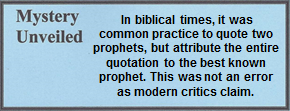
< ——————————————– >
“Prepare the way for the Lord.” Some older English Bibles have the word “LORD” in capital letters. The capitalization indicates that the original name of God was “Jehovah,” as it is in this case. The application by the Holy Spirit of what is said about Jehovah in the Old Testament is focused upon Jesus in the New Testament – that is that Jesus is God. The focus of this phrase is the preparation for the coming of Jehovah as reflected in Isaiah 40:3. And while Luke said “Prepare the way for the Lord,” Matthew summed up the entire ministry of John in this statement “Repent for the kingdom of Heaven is at hand” (Mt. 3:2).
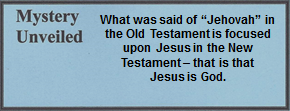
Every winter heavy rains washed rocks, trees, and other debris onto the roadways, as well as creating holes and gullies by washing the sandy soil away. The extensive damage to the roads needed to be repaired before the king traveled on them (cf. Isa. 57:14). The king sent road crews out every spring to repair the damage. However, in addition, whenever the king was going to be traveling to a village, a herald would go ahead and tell the villagers that their king was coming. The villagers would then repair any remaining damage to the highways. John used this imagery to tell the people to get ready for their king, who was about to come. With John’s reference to the prophecy of Isaiah, his listeners realized it was time for the prophecies to be fulfilled. Four centuries of divine silence had ended.
It should be noted that beginning on the 15th of the preceding month of Passover, all bridges and roads leading to Jerusalem were repaired to accommodate the influx of pilgrims.[28] The entire infrastructure of Jerusalem including roads, bridges, water lines, were paid for by funds given to the temple. An example was preserved by the historian who indicated that before Emperor Vespasian traveled, his military went out first to repair the roads. In the early days of the First Revolt (A.D. 66-73), the Tenth Legion first fought the Zealots in Galilee and then marched south to destroy Jerusalem. Vespasian was concerned that the condition of the road would slow down the march and the enemy might then attack from the woods. So among his directives he ordered that,
Next to these (footmen and horsemen) followed ten out of every hundred, carrying along with them their arms, and what was necessary to measure out a camp withal; and after them, such as were to make the road even and straight, and if it were anywhere rough and hard to be passed over, to plane it, and to cut down the woods that hindereth their march, that the army might not be in distress, or tired with their march.
Josephus, Wars 3.6.2 (117-118)[29]
[1]. See commentary on 05.01.02.Q1, “Is there a mistake in the quotation of Isaiah?”
[2]. Jeremias, Jerusalem in the Time of Jesus. 301-02.
[3]. See “Defilement” in Appendix 26.
[4]. For more information of various reasons for baptism, see baptism as related to Nicodemus in 05.05.05.Q2 and Q3.
[5]. John the Baptist used figurative language that is reflective of agriculture and desert life. Therefore, he uses terms such as brood of vipers, fruits (of repentance), the axe at the root of the tree, baptism of fire, the threshing floor, and the burning of the chaff. It was typical language often expressed by orthodox rabbis to those who did not live or preach biblical principles.
[6]. The term “fire” was frequently used by Old Testament prophets: Isa. 29:6; 66:15; Ezek. 38:22; Amos 1:4; 7:4; Zeph. 1:18; 3:8; Mal. 3:2; 4:1. The term is also found in numerous extra-biblical books such as Jubilees 9:15; 36:10 and in the Dead Sea Scrolls.
[7]. Harrison, A Short Life of Christ. 66-70.
[8]. Gnosticism would not become influential until the 2nd century A.D.
[9]. Mould, Essentials of Bible History. 563-70.
[10]. De Lacy, “Epicureanism and the Epicurean School.” 3:2-3.
[11]. This formula for dating was used some thirty times in 1 and 2 Kings.
[12]. This date is reconciled to today’s calendar. See Appendix 1 for dates of reign.
[13]. Liefeld, “Luke.” 8:854.
[14]. Metzger, New Testament. 104-05.
[15]. Hoehner, Chronological Aspects of the Life of Christ. 30-37; Hoehner presents five interpretations of dating the beginning date of the Baptist. This writer believes that four of them are highly unlikely for various reasons; See Pentecost, The Words and Works of Jesus Christ. 79-80. However, F.F. Bruce in New Testament History (192 n2) believes the year A.D. 30 is more likely than any other for the crucifixion date.
[16]. Josephus, Antiquities 15.11.1.
[17]. Josephus, Wars 1.21.1.
[18]. Stein, R. Jesus the Messiah. 57; Metzger, New Testament. 104-05; Tenney, New Testament Times. 164-65; Lightfoot, A Commentary on the New Testament from the Talmud and Hebraica. 3:258-60.
[19]. See also Appendix 1.
[20]. When the New Testament writers used terms such as “testimony” or “bore witness” or “I have seen and testify,” these are statements whereby the author places himself under an oath concerning the truthfulness of the statement made. These are statements of legal terminology in both the Greek and Jewish cultures. Bookman, When God Wore Sandals. CD Trac 5.
[21]. Vincent, Word Studies in the New Testament. 1:82; Vine, “Tetrarch.” Vine’s Complete Expository Dictionary. 2:624.
[22]. While Luke recorded the year in relation to the year of the Caesar, the calendar he used is unknown. The fifteenth year would probably be August 28 to August 29. Less likely is that he used the Syrian calendar, which would have the year reckoned between the fall of 27 and the fall of the following year. See Liefeld, “Luke.” 8:854.
[23]. Liefeld, “Luke.” 8:845; Kittel, Theological Dictionary of the New Testament. 4:975-1008.
[24]. Vincent, Word Studies in the New Testament. 1:23.
[25]. Stern, Jewish New Testament Commentary. 16.
[26]. See Appendix 30 for other applied hermeneutical principles.
[27]. Barclay, “Matthew.” 1:13.
[28]. Geikie, The Life and Works of Christ. 1:213.
[29]. Parenthesis insert mine for clarification.
